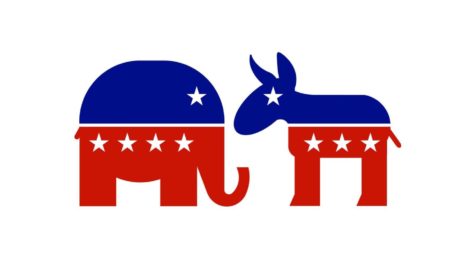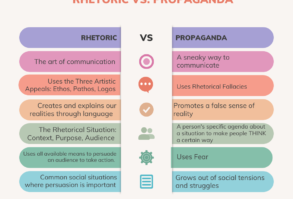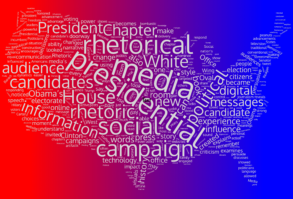In my upcoming book, “Political Rhetoric, Social Media, and American Presidential Campaigns,” I take a look at the National Conventions for the Republicans and Democrats.
In my book, I show how conventions have become storytelling machines–thanks to the media– all while analyzing the crazy 2016 National Conventions.
So, without the flash of fancy stages, wild crowds, endless star-studded speakers–what will this year’s tainted COVID-19 convention be like?
Maybe it will take us back to simpler times…
The New York Times reported in the summer of 1924,
Radio, having spread the roaring, nominating balloting and band music of two National Conventions over the country, has gained many new followers and thousands now have a keener interest in politics…
A taxi cab driver installed a radio set in his cab so that delegates he carried back and forth from the Garden and the Waldorf-Astoria could keep in touch with the convention.
The New York Times did also report that broadcasting the convention by radio did have its problems.
Despite the great army of loudspeaker horns scattered throughout the Garden the speakers’ voices varied at different sections of the hall, and if the broadcaster wandered away or turned from the microphones his words faded.
Radio gave LIFE to the democratic process. The power of the media helped people understand American politics and for once they were participating in the conversation. Or at least listening to the conversation.
The power of radio in making millions attend the proceedings with keen interest has led to the suggestion that the proceedings of Congress be broadcast so that every citizen could be informed and follow Federal affairs. Radio has put a keener interest in politics, and when the boy and girl in grammar school study history it will be much easier for them to understand how Presidential candidates are chosen because they heard it all done on the radio.
Radio became a gateway for the national convention to actually become a national event.
In 1956, when people were realizing the power of television, The New York Times reported,
Since the national conventions are a valuable and, in fact, necessary part of the democratic process of choosing the nominees, it is too bad if they are allowed to become so artificial and so boring that they drive away all but their capitive audience.
As very real expressions of the marvelous–and at times mysterious–functioing of American democracy the conventions ought to be able to excite the popular imagination.
It wasn’t until television that national conventions held a story arc to keep the audience interested. The drama, the intrigue, the climax moment of when the candidate, themselves, took the stage. You not only heard the passion in a candidate’s voice, you saw their passion in their gestures and in their own eyes.
Once television could televise the event, people worried they were too boring. So, modern times made sure the primetime event that networks started to air had all the must-see celebrity, and political heavyweights.
This year’s conventions might be boring because the excitement will be contained in one’s living room. The lack of audience reaction to the convention speeches will be the biggest loss to the enthusiasm for building the story arc.
This year’s convention will be different. It will really be a zoom call. Pretaped speeches. The audience tucked safely at home.
The Washington Post reported that the convention prepared everyone for their stay at home conference.
That includes dozens of speakers who have been mailed video-production kits, with basic equipment such as microphones, lighting and advanced routers, so they can produce and transmit their own shots. Other homebound delegates will be dialed in to quick feeds of the live speeches, so their real-time reactions can be broadcast to the country as if they were in the same room as the speakers.
Will this type of convention hold an audience’s attention?
Depends. Michelle Obama is the final keynote speaker on the first night. But her speeches are more dynamic when given live. Instead, she pretaped her speech at her vacation home in Martha’s Vineyard.
The audience’s reactions energize the speaker and the speaker’s words energize the audience. The energy will be lacking for both parties.
Instead, you will see screens upon screens. One screen jumps to one screen, then several screens. I predict it will be the National Screen Convention. The twitter account @Ratemyskype room will have a busy two weeks of rating backgrounds. Let’s also not forget the Zoom backgrounds we will cringe at and be able to download for our own use. Here’s the Democratic National Convention Digital Toolkit.
As radio broadcasters moved away from their microphones in the 1920s which faded the audio, just think what a poor wifi connection could do to an important live moment during the convention.
“Hello… hello, can you hear me? ” or “You’re frozen.” Might be the awkward moments we live for while watching this year’s conventions. I agree with The Washington Post article where they said it’s the awkward moments of politicians trying to relate to us, the audience. Those awkward, weird moments that you tweet about and/or talk about the next day.
The excitement from the reporters alone will be missed. The live shots from the busy delegate floor. The balloons (I mean the visual of 2016 campaign with Bill Clinton playing with all the balloons made the 2016 Democratic convention).
So, what will Democratic Nominee Joe Biden and Kamala Harris have to do to tell their story? The convention will be their introduction, but they will have to gain momentum in telling it with the help of others. This includes
- Storytelling through social media
- Visual storytelling
- Building Story Arcs
- Connecting to their audience
- Repetition of their message
Biden and Harris must make themselves as available as possible to the media. They must be nonstop on people’s social media feeds and news headlines repeating their message. And, the one strong point with both Biden and Kamala–they control their narratives.
Donald Trump uses various media platforms to tell ALL his stories. He knows how to create drama and knows how to create characters out of his opponents as if they were all fictional characters.
He knows his story well. He broke the traditional national convention story in 2016–he will create a story for 2020 that is just as weirdly fascinating to watch in 2020.
Weirdly fascinating in a “what am I watching?” sort of way. People tune in.
That’s the danger of Trump is his vast array of media knowledge on what makes for a great story.
Sometimes Trump being Trump is all the story he needs.
But, will that story resonate like it did in 2016?
The National Conventions is where the campaign introduces it’s characters to their story.
- Nominee
- Vice Presidential Nominee
- Celebrities supporting Nominees
- Politicians supporting Nominees
- Families of the Nominees
- and the framing of their opponent
What needs to happen in the Democratic online convention–
Share your campaign story.
“Once upon a time” begins at the convention.
Incumbent President Trump is planning to accept the Republican nomination on the White House lawn.
He has the setting for the perfect reminder he is president.
What backdrop will Biden and Kamala have? They better have something better than a dark, empty studio. Maybe a basement in Wilmington, Delaware? The most famous basement in presidential campaign history. (More famous than the White House bunker where Trump hid during the George Floyd protests).
The visual rhetoric is just as important as the spoken rhetoric.
You can set your story’s tone just by what you are surrounded with.
If Trump accepts the nomination on the White House lawn (which by the way is unethical to do in terms of the political protocol) you will see a grand setting and a reminder of who is president. No matter who is president at the time, the incumbent has an advantage by being seen presidential by the use of their props and by doing their job while campaigning.
To defeat an incumbent is about convincing the American public you can do better than the one holding office.
You may laugh and say, that’s an easy sell these days. And, believe that Trump can’t win, but seriously, this race is up for grabs. Read my article How Trump Can Win. I do hear rumblings that Trump is not gaining new supporters as he did in 2016. And, it’s a fact that former supporters, even Republicans, are jumping to the Biden and Harris campaign. (43 Alumni for Biden, The Lincoln Project)
The National Conventions set the tone for the rest of the campaign. The 2020 National Conventions will be known as the first virtual convention where candidates are not in the same room as the delegates.
Fun fact: Did you know Abraham Lincoln sent a telegraph to accept his party’s nomination?
Accepting a presidential nomination virtually is so 2020. We are living in historic times. Pick an area in our society that is not touched and is changed by the year 2020. Chaos brings change. The Democratic National Convention narratives must bring a strong sense of hope to bring us to the other side of that chaos. If Biden and Harris can bring hope and faith into their narrative this week, then they may have a happy ending to their story.
Yes, there won’t be any balloons dropping, and no live cheers and applause.
We will have plenty of Zoom rooms and spotty wifi.
Sorry, Michelle pretaped her speech, but we all know it’ll be a great speech live or taped.
Maybe a possible basement sighting.
Oh, and it’s a hard no (even for Republicans) for a primetime speech by Rudy Guiliani this year.
But we have President Trump doing what Trump does best–rock the political boat one last time while accepting his party’s nomination on the White House lawn.
The year 2020 just became a collective awkward moment for all of us.
And, a pretty good story.





